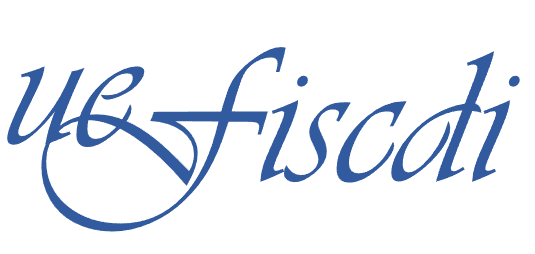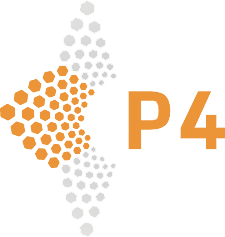Contracting authority: Executive Agency for Higher Education, Research, Development and Innovation (UEFISCDI)
 |
 |
Fundamental and Frontier Research |
|
| Funding programme: |
Fundamental and frontier research |
| Subprogram: |
Exploratory research projects |
| Project code: |
PN-III-P4-PCE-2021-0906 |
| Project Manager: |
Dr. Aurica FARCAS |
| Contractor: |
“Petru Poni” Institute of Macromolecular Chemistry, Iasi Romania |
| Acronym: |
SUPRAMOL-MAT |
| Project period: |
06.2022 - 12.2024 |
| Duration: |
32 months |
| Budget: |
1.200.000,00 Lei (250.000 Euro) |
The interest in the area of semiconducting polymers (SMPs) for organic electronics has intensified during the past few decades as a consequence of their numerous advantages over conventional inorganic materials [1]. Being in direct competition with inorganic thin-film and crystalline silicon photovoltaic (PV), there are still many points for improving SMPs`s charge carrier mobility that is the main difference between these organic and inorganic materials [1a,2]. This is why there is a lot of research interest for improving the electronic properties of SMPs. Recently, so-called supramolecular SMPs have been recognized as promising materials that attracted much attention for optoelectronics [3]. These supramolecular compounds exhibit a crucial importance for further development of organic electronics and represent a key bottom-up strategy to build and process relatively soft functional materials. The design and synthesis of such supramolecular SMPs of polypseudorotaxanes (PPs) or polyrotaxanes (PRs) types open the gates to unprecedented opportunities in many fields of science and technology. On the basis of our previously studies, it was found that the supramolecular encapsulation of SMPs backbones is effective in preventing aggregation and hindering fluorescence quenching, even when only a small fraction of the conjugated backbone is encapsulated [4-8]. Therefore, our proposal is aiming to investigate a series of new and original supramolecular SMPs and to select the most promising materials directly for construction of innovative devices or new classes of biomimetic ionic channels that will be safe for human and environment. These newly proposed supramolecular architectures will be contributing forces and no doubt will lead to interesting results. In addition, the accomplishment of the scientific objectives themselves will give the team members an excellent training in a multidisciplinary field at the intersection of organic synthesis, supramolecular and polymer chemistry as well material science for the generation of active layer for organic electronic devices.
References
[1]. S. R. Forrest, The path to ubiquitous and low-cost organic electronic appliances on plastic, Nature 2004, 428, 911–918; b) A. Facchetti, π-Conjugated polymers for organic electronics and photovoltaic cell applications, Chem. Mat. 2011, 23, 733-758.
[2]. R. Noriega, J. Rivnay, K. Vandewal, F. P. V. Koch, N. Stingelin, P. Smith, M. F. Toney, A. Salleo, A general relationship between disorder, aggregation and charge transport in conjugated polymers, Nat. Mater. 2013, 12, 1038–1044.
[3]. A. Farcas, Conjugated polyrotaxanes for optoelectronic applications LAMBERT Academic Publishing, 2015.
[4]. T. Putnin, H. Le, T.-T. Bui, J. Jakmunee, K. Ounnunkad, S. Péralta, P.-H. Aubert, F. Goubard, A. Farcas, Poly(3,4-ethylenedioxythiophene/permethylated βcyclodextrin) polypseudorotaxane and polyrotaxane: Synthesis, characterization and application as hole transporting materials in perovskite solar cells, Eur. Polym. J. 2018, 105, 250-256.
[5]. A. Farcas, H. Ouldali, C. Cojocaru, M. Pastoriza-Gallego, A.-M. Resmerita, A. Oukhaled, Structural characteristics and the label-free detection of poly(3,4-ethylenedioxythiophene/cucurbit[7]uril) pseudorotaxane at single molecule level, Nano Res. https://doi.org/10.1007/s12274-022-4918-x.
[6]. A. El Haitami, A.-M. Resmerita, O. Fichet, S. Cantin, P.-H. Aubert, A. Farcas, Synthesis, photophysics and Langmuir films of polyfluorene/permodified cyclodextrin polyrotaxanes, Langmuir 2021, 37, 11406−11413.
[7]. A. Farcas, A.-M. Resmerita, Supramolecular chemistry: synthesis and photophysical characteristics of conjugated polyrotaxanes, in: Encycl. Phys. Org. Chem., Vol. 3, John Wiley& Sons, USA, 2017, pp. 2543-2582.
[8]. a) A. Farcas, G.Tregnago, A.-M. Resmerita, S. Taleb Dehkordi, S. Cantin, F. Goubard, P.-H. Aubert, F. Cacialli, Effect of permodified β-cyclodextrin on the photophysical properties of poly[2,7-(9,9-dioctylfluorene)-alt-(5,5'-bithiophene)] main-chain polyrotaxanes, J. Polym. Sci. Part A: Polym. Chem. 2014, 52, 460-471; b) A. Farcas, K. I. Assaf, A.-M. Resmerita, L. Sacarescu, M. Asandulesa, P.-H. Aubert, W. M. Nau, Cucurbit[7]uril-threaded poly(3,4-ethylenedioxythiophene), Eur. J. Org. Chem. 2019, 3442–3450.
|








